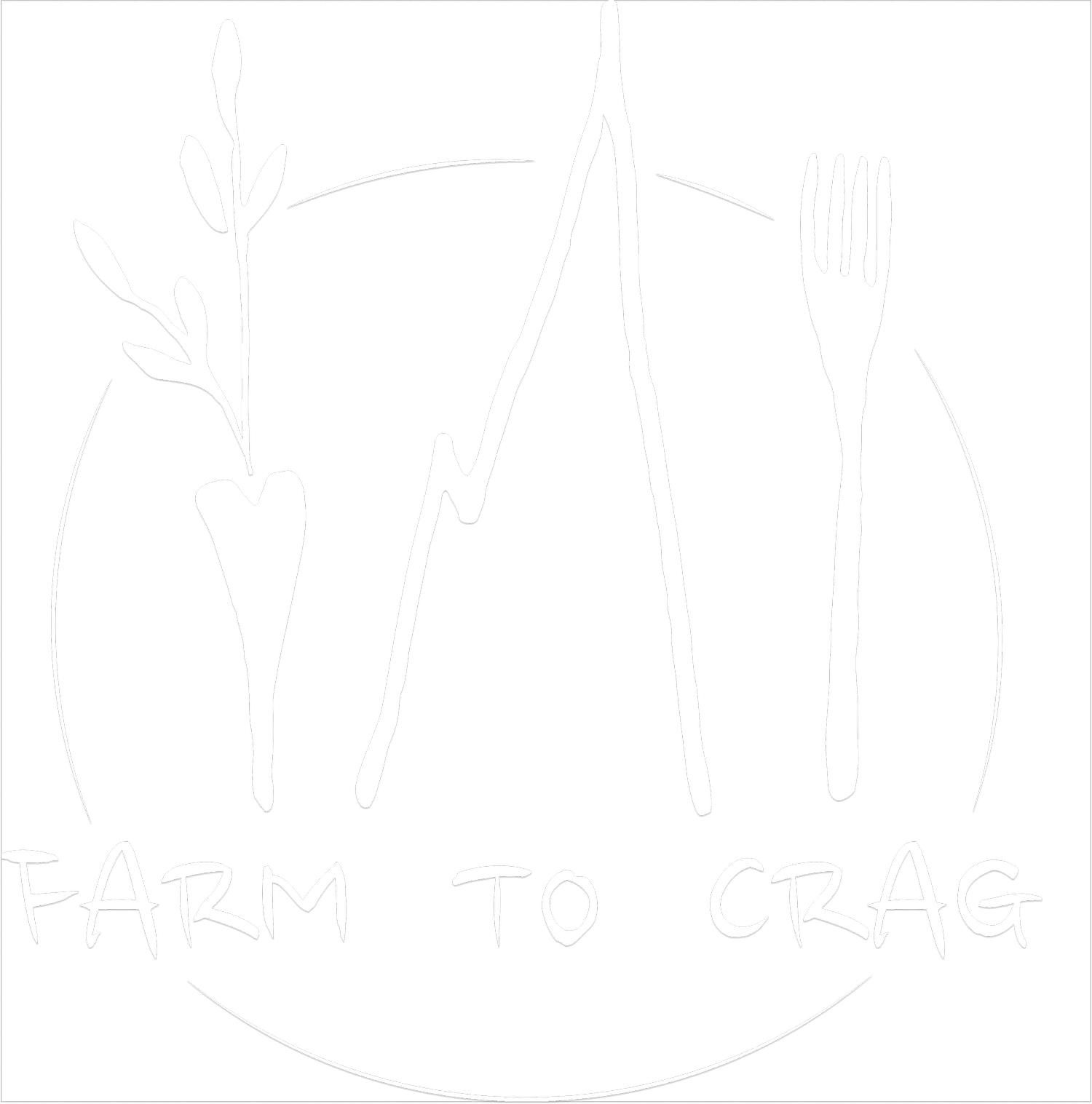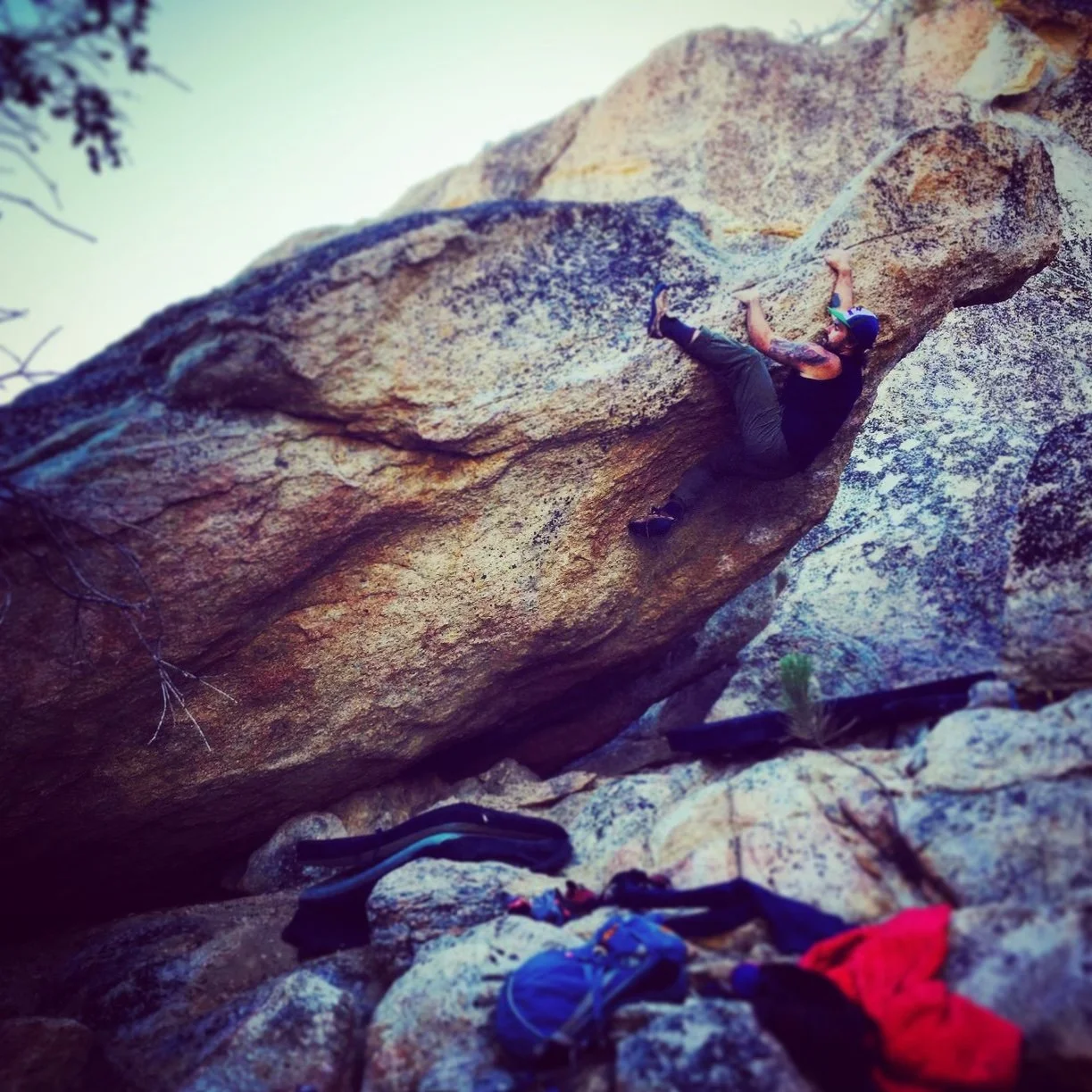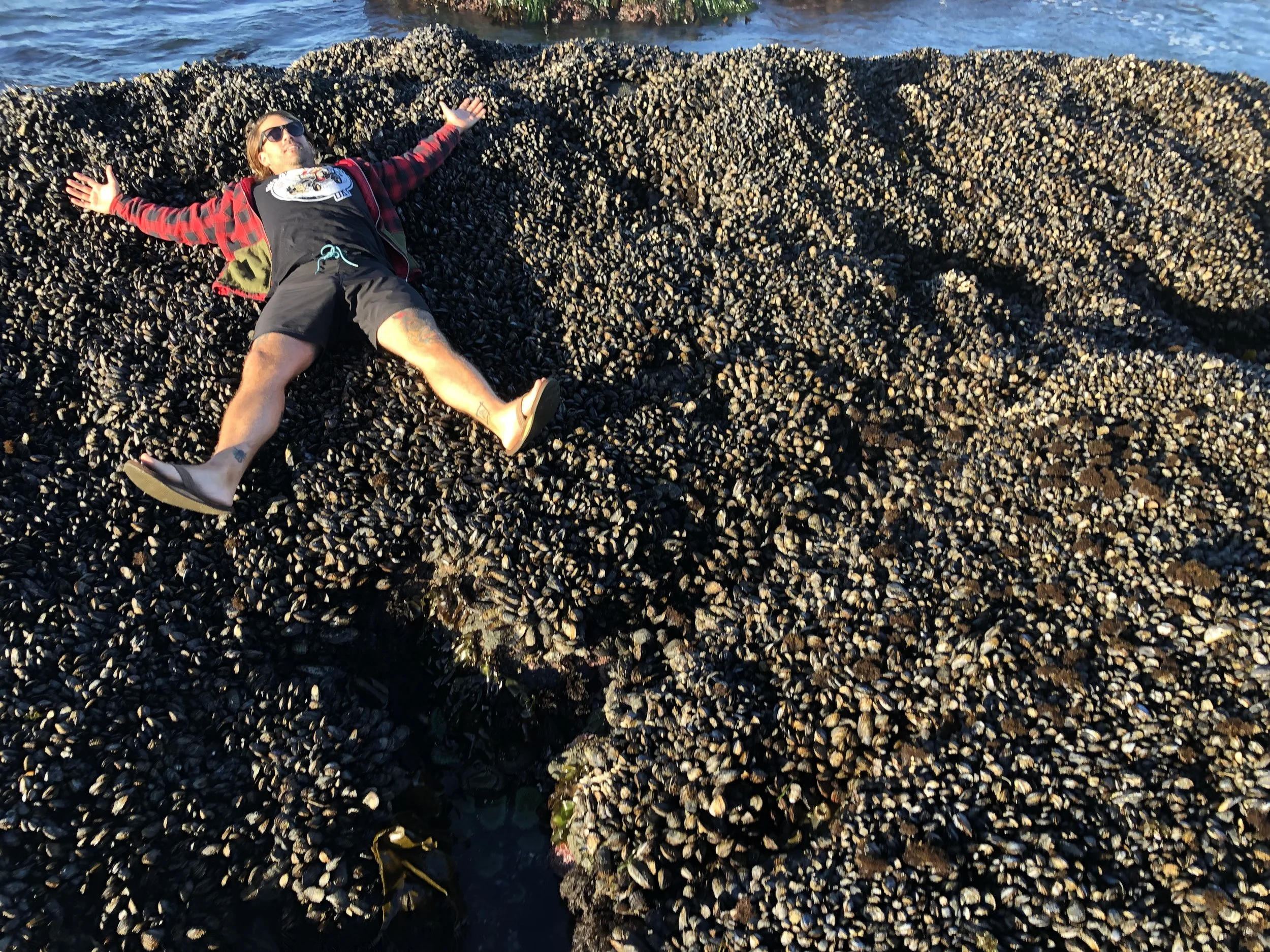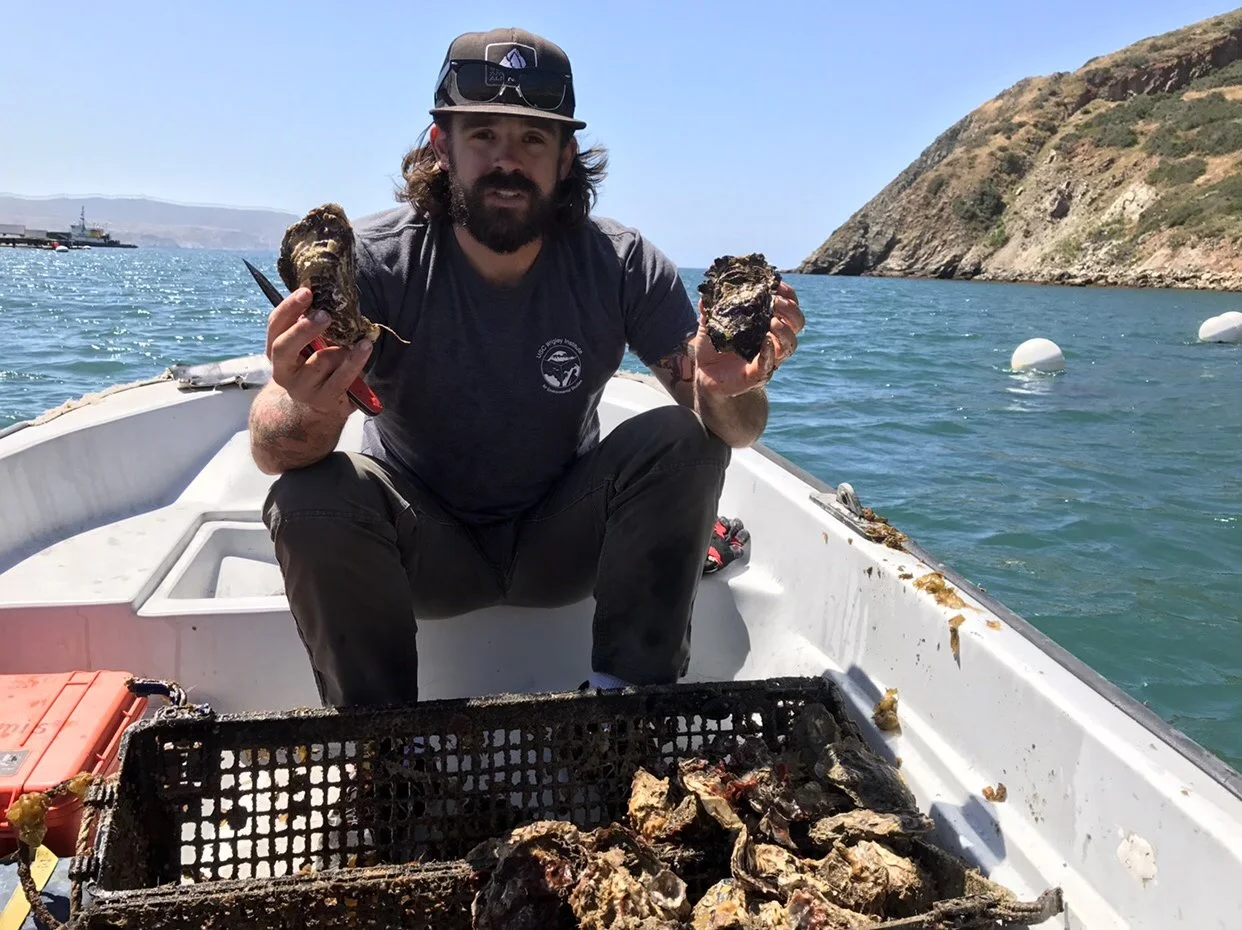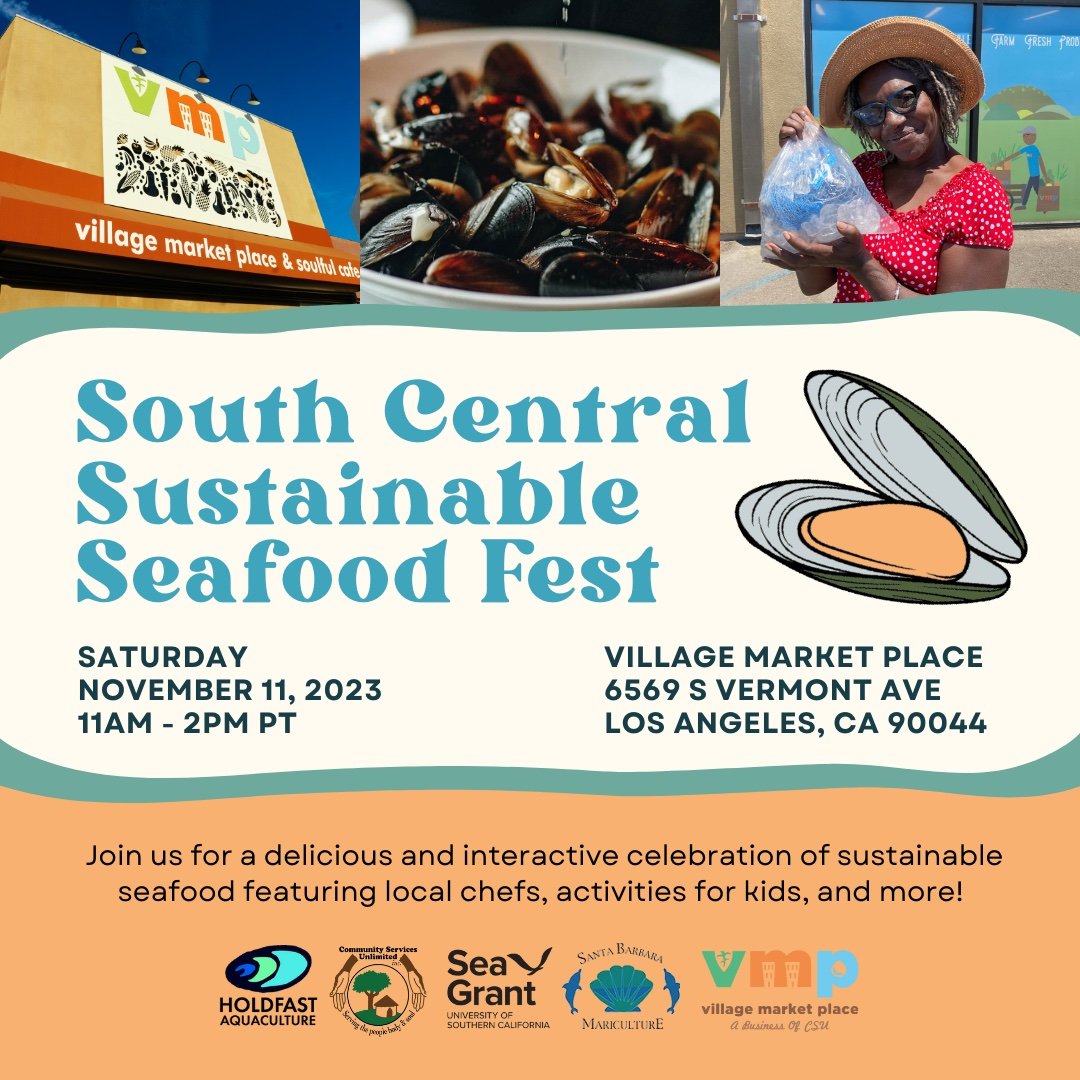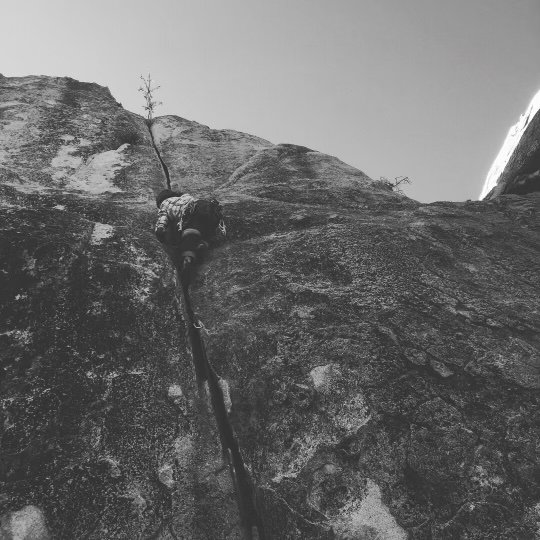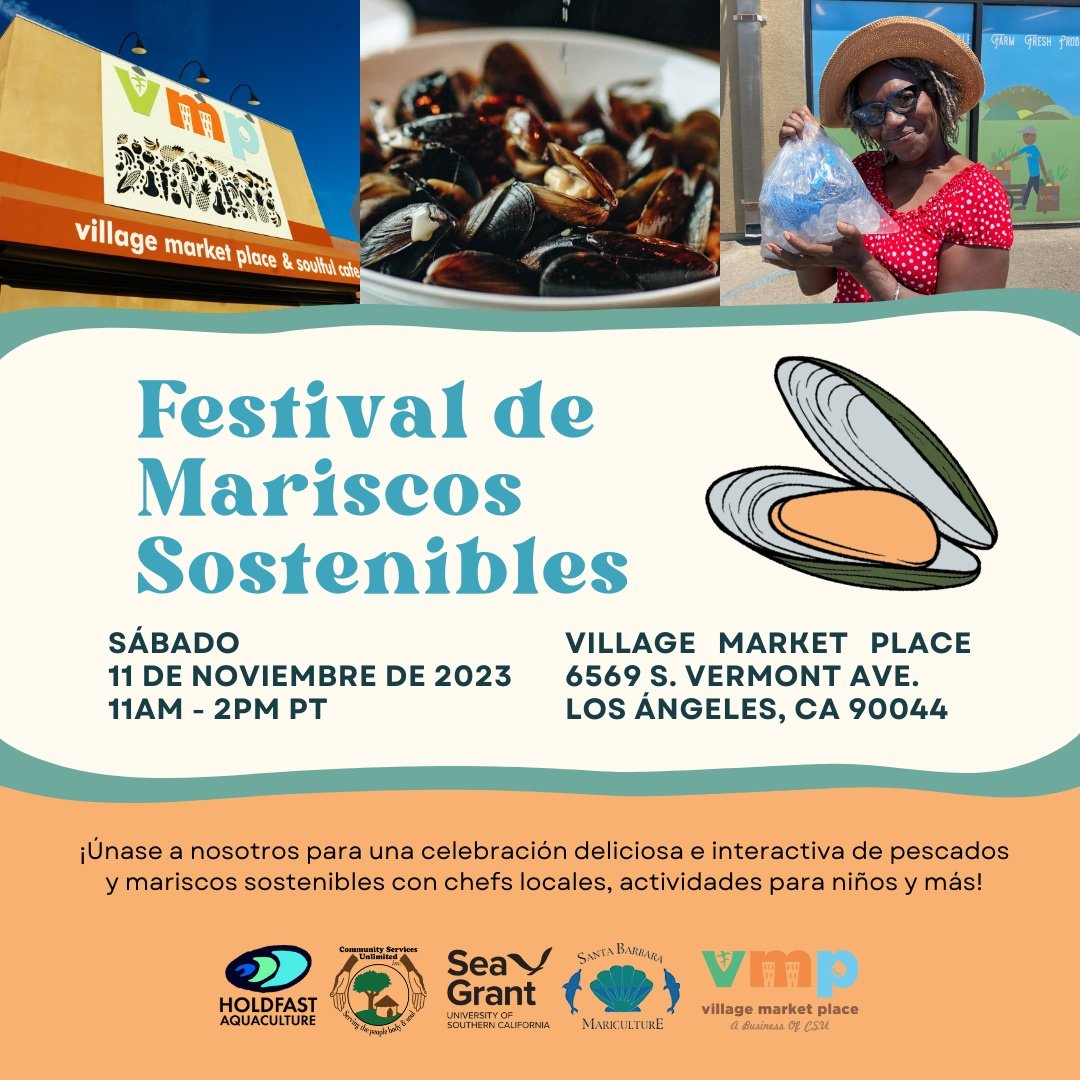Sustainable seafood from California
A collaboration with Narinda Heng
Nathan checking on the mussels - Photos from Nathan and Holdfast Aquaculture
At my first Farm To Crag Yosemite Gathering this year, I enjoyed our conversations about regenerative agriculture, sustainable farming practices, all while nourished by Raw Roots Farm produce, Wild Idea bison, and Patagonia Provisions tinned fish. I thought about how far some of my favorite foods travel to land on my plate.
I started eating canned shellfish much more often after becoming a climber: smoked oysters, mussels, sardines, packed in oil– shelf-stable protein and deliciousness worth the extra clean-up effort. Many of my favorite canned fish products come from far away places like Spain, Portugal, Alaska. Luckily, a change is on the horizon in California: Holdfast Aquaculture, a company co-founded by my dear friend Diane Kim, is not only working on breeding native and locally-adapted shellfish and seaweeds for Pacific Southwest farmers, they are also working to grow access to sustainable seafood to Los Angeles communities.
And it just so happens that one of Holdfast Aquaculture’s co-founders, Nathan Churches, is an avid climber (we’re everywhere!).
Nathan enjoying the beautiful sandstone of Red Rocks - Photos from Nathan and Holdfast Aquaculture
I wanted to talk to Nathan because I realized that as a coastal city, Los Angeles is known for its beach culture, but not many associate the city with a distinct seafood culture. And long before LA existed, the Tongva, Chumash, their ancestors, and their trade partners were nourished by the ocean.
I grew up going to Redondo Beach Pier with my family, cracking open freshly steamed crab to dip into homemade garlic lime fish sauce, accompanied by piles of jasmine rice hot from our rice cooker. My cousins and I would frolic on the jetty and play arcade games. (Perhaps scrambling around on that jetty prepared me for the talus I now travel over as climber? My first introduction to class 3 terrain.) Later, when I visited the pier in my 20s, there were big warning signs to stay off the jetty, and the seafood counters were much quieter than I remembered. I suspect that as awareness of ocean pollution increased, the appeal of seafood from the greater Los Angeles shores decreased, especially with so much visible offshore industry.
I’m excited for the ways Holdfast Aquaculture is working to change that, and to learn more about “restorative aquaculture,” the seafood analog to regenerative agriculture.
Nathan Bouldering - Photos from Nathan and Holdfast Aquaculture
Nathan’s background as a climber and as a scientist
Nathan grew up near climbing areas, in places like St. George, Olympia, and Seattle, but cut his teeth as a climber while attending grad school in Los Angeles. Some of his favorite places to boulder are Joshua Tree, Black Mountain, and the Bishop area. His background is in population genetics and marine biology, and he met Diane while studying bivalves and ocean acidification and breeding. As Chief Science Officer at Holdfast, Nathan works to apply research to industry to advance sustainable aquaculture practices.
What are some ways that climbing and your work at Holdfast intersect?
Climbers are generally very conscious of the sustainability of their practices and care about their environment. There’s a natural overlap with low trophic aquaculture and sustainable practice with food. People are waking up to the reality that we have to do regenerative farming to be better stewards of the land, and restorative aquaculture is imperative to be better stewards of the planet as a whole since 70% of our planet is ocean. And California in particular is an opportunity area where marine aquaculture can “support ecosystem recovery and benefit society.”
Nathan on bed of Mussels - photo Nathan Churches and Holdfast Aquaculture
Nathan drew an analogy between the need to restore marine life in coastal areas and the need for revegetation of the Buttermilks: “Both ecosystems are overexploited.” Just as we can seek local farmers’ markets for vegetables and support local climbing shops, we can seek local seafood. Reducing the distance between where our food is produced and where we consume it– even keeping to within a state or region when possible, is a step toward better stewardship of our ecosystems.
Why Mussels?
According to Nathan, mussels are a keystone species. There are more than 300 species that live only in mussel beds, so putting aquaculture structures in the water helps increase biodiversity of an area. This also benefits sport fishing potential– the structures that allow mussels to grow are also places where small fish can get big.
Similar to Farm To Crag, “Holdfast hosts ‘farm-to-table’ cookout nights with local restaurants in San Pedro. Restaurant-goers are always interested to sample delicious oysters, mussels, and seaweeds that they already love, then learn about how they’re grown in their own community.” (NOAA article)
As an expansion of those cookouts, Holdfast and their longtime collaborator, Community Services Unlimited, Inc, are hosting the South Central Sustainable Seafood Fest on Saturday, November 11. This event is part of a larger South Central Los Angeles Seafood Hub project which brings together California Sea Grant, scholars from USC and UCSD, and local farmers like Santa Barbara Mariculture. Not only is Holdfast invested in impacting the broader industry, they are also rooted in local communities and food justice.
Fresh Mussels! - Photos from Nathan and Holdfast Aquaculture
At the Seafood Festival, Holdfast and CSU will debut the first mussels product born, raised, cooked, and packaged entirely within California, made by and for the South Central Los Angeles community. For Holdfast, creating a sustainable seafood culture is also about creating an equitable one, accessible to all income levels.
If you’re heading to Hangar 18 (an old favorite for both Nathan and myself), swing by the South Central Sustainable Seafood Fest for a sampling of Escabeche Miso mussels, grown from Holdfast seed by Santa Barbara Mariculture and prepared by CSU, Inc. And if you’re reading this after the festival, keep an eye out for news on the South Central LA Seafood Hub.
Holdfast has larger-scale projects coming in the next 2-3 years. Follow Holdfast https://www.instagram.com/holdfastaq/ and CSU Inc: https://www.instagram.com/csuinc/.
I’m looking forward to someday, not too long from now, feasting on a package of those escabeche mussels at Echo Cliffs.
